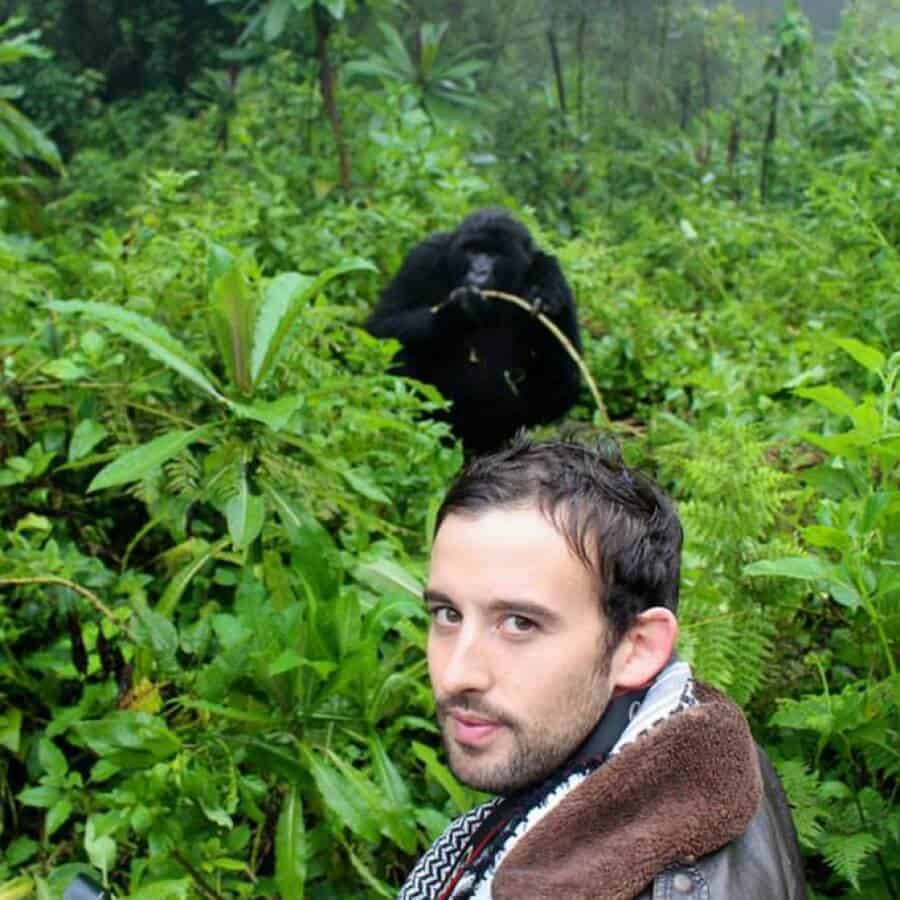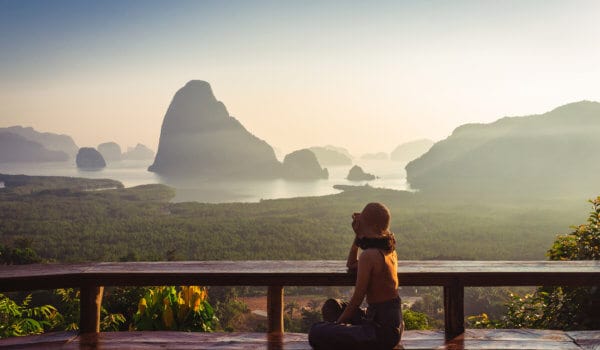Leigh Woods, Project Manager at Youth Time International Movement has spent the last few years exploring the globe in pursuit of some of its most spectacular wild flora and fauna. During his travels he has encountered a wide array of vulnerable and endangered species including the Black Rhinoceros, and the planet’s largest ever animal, the Blue Whale. During his time spent working with vulnerable teenagers in Rwanda, he ventured to the lush green hills of Volcanoes National Park, where he came face to face with the mountain gorilla.
In the past few years, I have been on an incredible journey throughout the Asian and African continents which included many wonderful encounters with wildlife. From experiencing my first African safari to realizing my lifelong dream of diving with Great White Sharks, I have been very fortunate. One might think the appeal of witnessing wild animals in their natural environment would eventually wear off, but my hunger for it actually grows stronger with every experience.
Fortunately, I was able to further indulge in my passion when I relocated to the small east African country of Rwanda in late 2013. Aptly named “The land of a thousand hills”, Rwanda has an embarrassment of riches in terms of wildlife. The small landlocked nation is best known for its high concentration of colourful birds and endangered primates. Furthermore, following the reintroduction of lions and black rhino to Akagera National Park in 2015 and 2017 respectively, the country now boasts a national park that plays host to Africa’s big five.
Rwanda also happens to be one of three countries that are home to the critically endangered mountain gorilla. Surprisingly, it was late as 1902 when they were first discovered by scientists, and since that day, mountain gorilla populations have been under serious threat of extinction. Poaching, habitat loss, disease and warfare have all contributed toward their decline and in 1981, it was estimated that as little as 254 mountain gorillas remained. Thankfully, recent years have seen large conservation efforts which have helped to ensure that these creatures have not become mere museum memories. It is now believed that there are at least 880 individuals wandering the hills of Rwanda, Uganda and the Democratic Republic of Congo.
A large contributing factor toward the recovery of the mountain gorilla population has been through ecotourism. Wildlife enthusiasts from all corners of the globe travel to eastern Africa to witness the glorious spectacle of the great apes roaming freely in their natural habitat. Visitors must book permits weeks in advance and encounters with our primate cousins are also restricted to a single one-hour session per day. With that said, the permit fee of $750 may seem astronomical, but it was worth every cent.
At 6am on a misty Sunday morning, I left the comforts of my hotel room and headed to base camp where I was to discover which gorilla family I would be meeting. After being introduced to the six other trekkers in my group, our guide announced that we had been assigned to the Ntambara (fighters) group – a band of 16 individuals. Soon after, we excitedly jumped into a jeep and headed off toward the foot of the mountain. After half an hour spent swaying to and fro on account of the bumpy terrain we arrived at our destination, climbed out of the vehicle and began our ascent up into the mist.
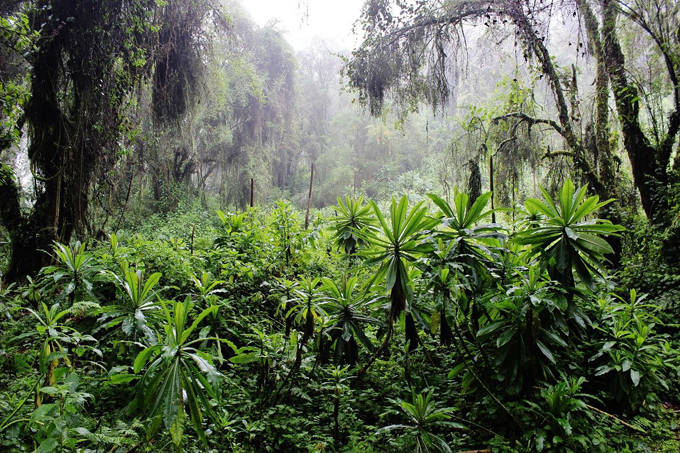
Volcanoes National Park is coated in dense green forest
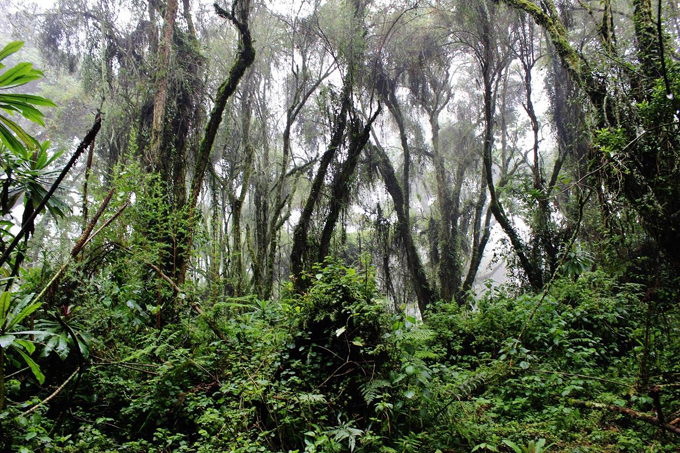
Volcanoes National Park Forest on a wet and murky day
During the relatively effortless hike toward the national park, we made a few stops where our guide taught us about some of the flora in the area. It was interesting to learn about the local vegetation and helped to make the 45 minutes it took to reach the border of the national park go by quickly. Before crossing through the park’s perimeter, our guide gave us instructions on how to behave when we came across the gorillas and ways in which to react to different situations that may occur.
As we climbed over the cobblestone wall which separated the surrounding farmland from the forest, it became very apparent that an arduous trek was upon us. It had rained continuously throughout the past few days and we all found ourselves ankle deep in the thick sodden soil. After around 40 minutes hiking the main trail, we met with one of the trackers and veered off onto a completely new route.
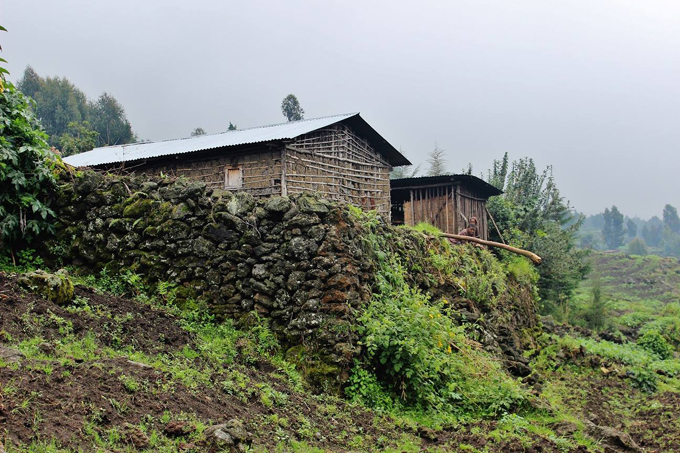
Farmland and dwellings just outside the National Park perimeter
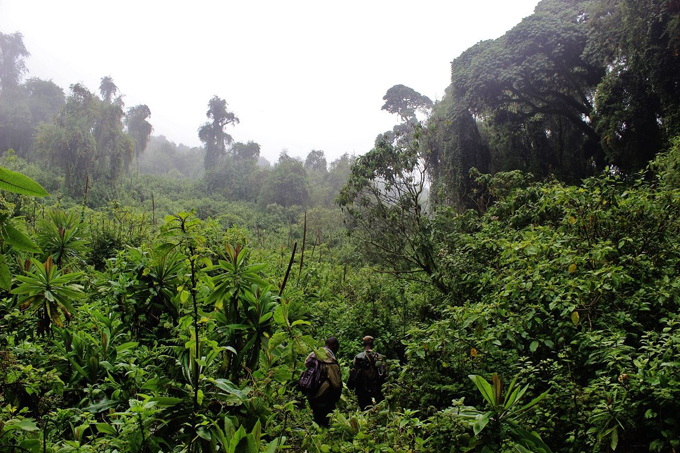
Our guides lead the way through the thick volcanic soil
We continued through the thick lush green forest for around 15 minutes before happening upon two other trackers who instructed us to stop. Within seconds a noise sounding very similar to bongo drums came from the trees located a few meters away and whilst grinning ear to ear I instantly recognized that it was the sound of a gorilla beating its chest. I felt a huge adrenaline rush as the realization set in that we were about to be acquainted with one of the most endangered animals to roam the planet.
As we approached the canopied area, a large and imposing silverback emerged from a nearby bush and slowly moved his way toward us. Members of our group began frantically throwing themselves off the trail to allow him the space to pass through. I had not imagined that I could have been within a meter or so of a wild animal with such immense power and lived to tell the tale. As he unhurriedly distanced himself from us, everybody breathed a sigh of relief as if they had believed that a strictly herbivorous creature had recently acquired a taste for human flesh. Shortly after, our group discovered more members of the band which included two females, a juvenile and an even larger Silverback feeding in a small opening.
We spent the next hour almost entirely in silence as we observed the gorillas moving in all directions around us. As we gradually moved our way around the tranquil forest, we managed to locate other members of the Ntambara group including a few amusing adolescents. Unoriginal as it may be, though, the toddler of the group provided the most enjoyment for me personally. Before encountering the gorillas we had been instructed not to come too close to the infants to prevent complications from arising on account of their extremely protective parents. I had to show immense restraint when backing off from the juvenile that was deeply intrigued by my camera and I. Nevertheless, I felt incredibly privileged to have been within a few feet of the curious little chap.
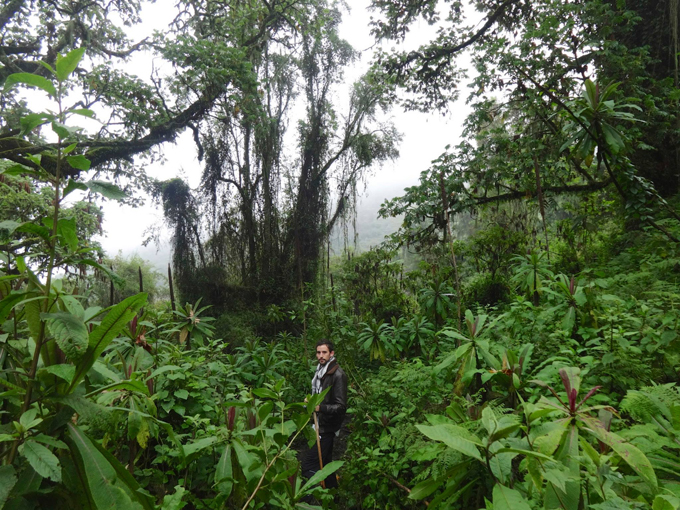
Moments before meeting the mountain gorillas for the first time
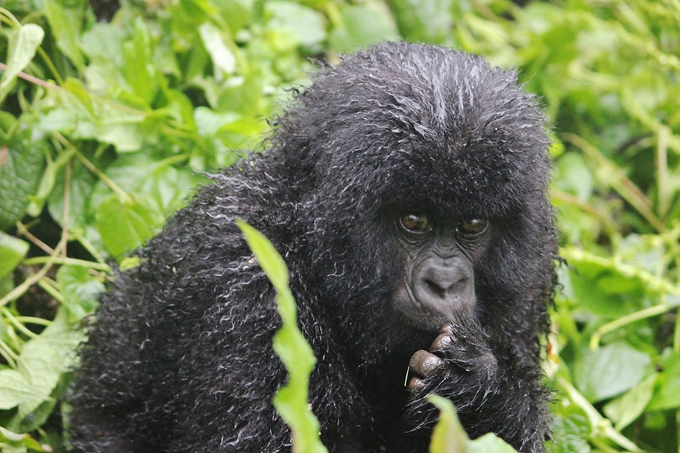
The juvenile who followed me around the forest
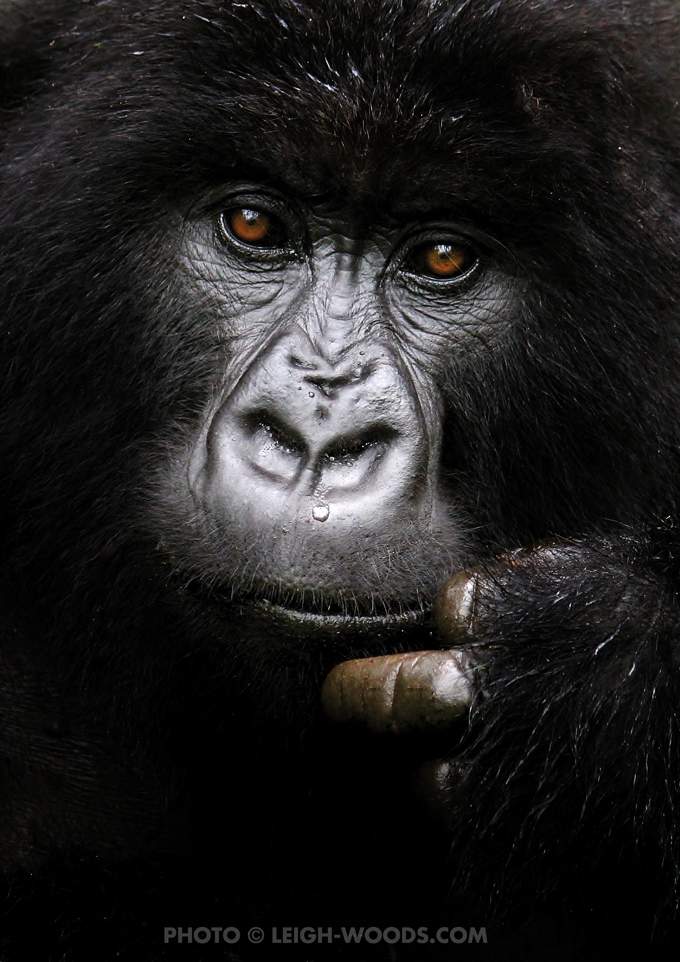
Our primate cousins display many mannerisms similar to us
The enhanced elation I felt in contrast to my previous encounters with wildlife was undoubtedly down to the fact that I had spent less time behind the camera lens and more time simply observing. From previous experiences I have learnt that photographs are no substitution for enjoying the moment as it happens.
I honestly cannot find the words to express the wonder of sharing a short moment in time alongside such powerful, graceful and magnificently intelligent animals. Magical perhaps, but the only way that one can really understand the euphoria surrounding even the briefest encounter with such glorious beings is to experience it for themselves.
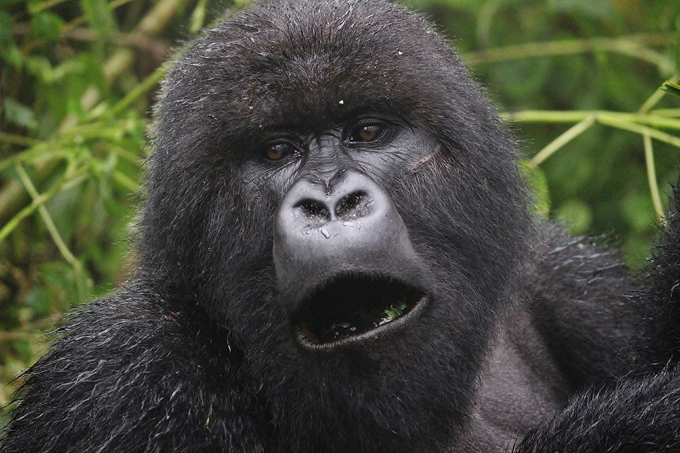
One of the subordinate males of the Ntambara group
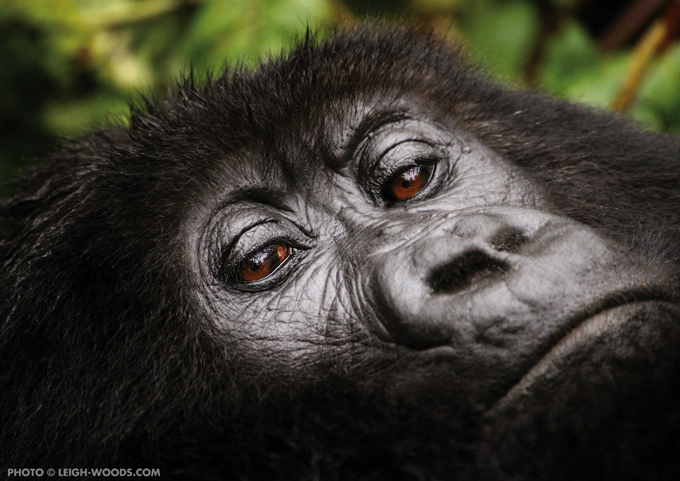
A young male lazing around on the forest floor
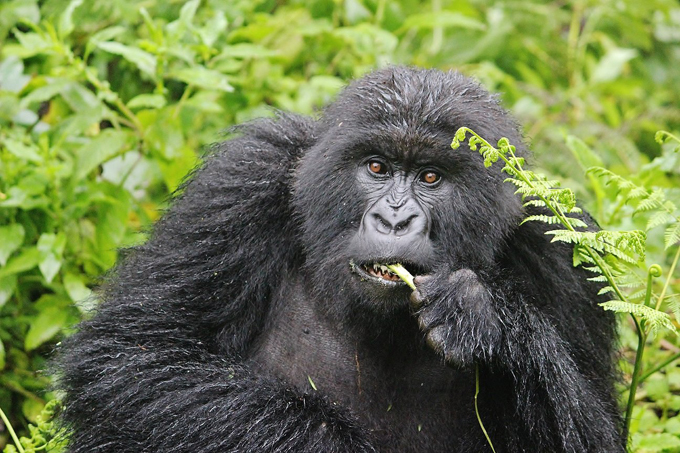
A young female snacking
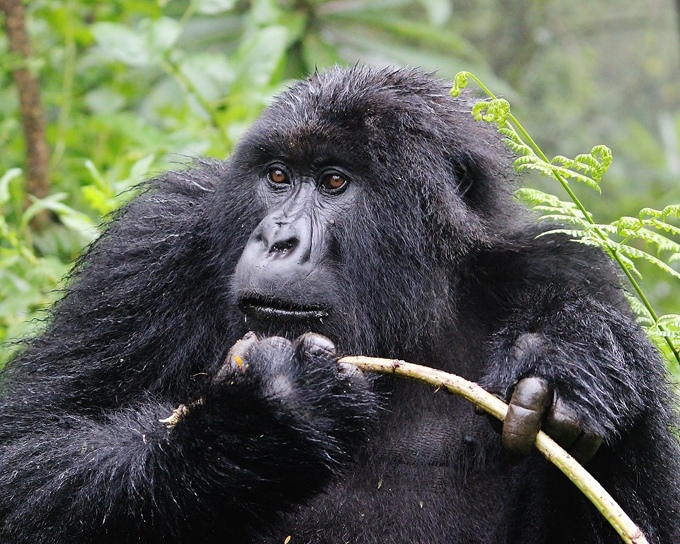
A graceful young female strips the branches for vegetation
Photos: Leigh Woods
Support us!
All your donations will be used to pay the magazine’s journalists and to support the ongoing costs of maintaining the site.
Share this post
Interested in co-operating with us?
We are open to co-operation from writers and businesses alike. You can reach us on our email at [email protected]/[email protected] and we will get back to you as quick as we can.
